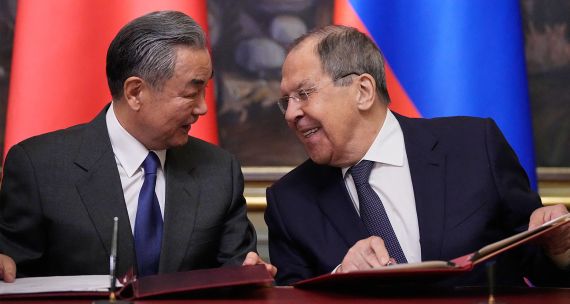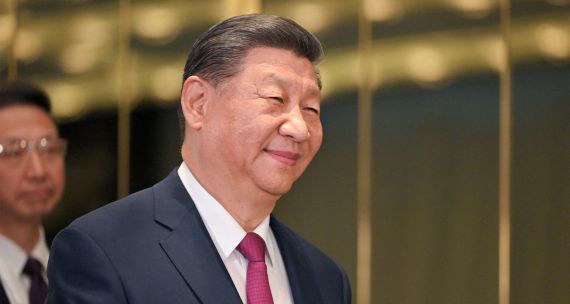The following is a guest editorial from China's Ambassador to Canada, Mr. Luo Zhaohui
China is the homeland of tea. Nearly all the words for tea worldwide are pronounced in two ways: cha or te. In the Han Dynasty some 2,000 years ago, Chinese tea was introduced to West Asia and Europe through Central Asia via the land Silk Road. The place of departure was Chang'an (an ancient capital of more than ten dynasties in Chinese history, today known as Xi'an). As may have been influenced by the spoken dialect of North China, the word for tea is pronounced cha in Arabic, Turkish, Greek and Russian.
Following the Age of Discovery in the 15th century, Chinese tea produced in the southeast provinces of Fujian and Guangdong was exported to Europe via the maritime Silk Road. Under the influence of the spoken dialect of South China, the word for tea is largely pronounced te in English, French, German and other languages.
Tea was a major commodity for trade between the East and the West in ancient times. For nations and peoples along the Silk Road, tea is imbued with memories of China. The ancient Silk Road facilitated China’s trading of its silk, tea and porcelain for spices, jewelery, medicines and Ferghana horses from regions to China’s west. Through the Silk Road, China introduced its Four Great Inventions (the compass, gunpowder, papermaking and printing) to other parts of the world. The ancient land and maritime Silk Road trade routes promoted mutual learning and common prosperity of the Eastern and Western civilizations.
For thousands of years, the ‘Silk Road Spirit’ — "peace and co-operation, openness and inclusiveness, mutual learning and mutual benefit" — has been passed from generation to generation. It promoted the progress of human civilization, and contributed greatly to the prosperity and development of countries along the Silk Road. The Silk Road Spirit is a historic and cultural heritage shared by all countries around the world. In the 21st century, a new era marked by the theme of peace, development, co-operation and mutual benefit, it is all the more important for us to carry on the Silk Road Spirit.
The world is undergoing complex and profound changes. The global economy is recovering slowly and global development is uneven. Many countries are faced with big challenges in pursuing development. All this makes it imperative for countries to work together and develop co-operation on a greater scale, with higher standards and in greater depth.
When Chinese President Xi Jinping visited Central Asia and Southeast Asia in September and October of 2013, he proposed an initiative of jointly building a Silk Road Economic Belt and a 21st-Century Maritime Silk Road (hereinafter referred to as the ‘Belt and Road’). The initiative is designed to uphold the global free trade regime and the open world economy, strengthen co-operation among countries along the Belt and Road, and promote common development and progress.
The Belt and Road, starting from China, runs through the continents of Asia, Europe and Africa, connecting the vibrant East Asia economic circle in the east and developed European economic circle in the west, and encompassing countries with huge potential for economic development. The population in the Belt and Road region is nearly 4.5 billion, accounting for over 60 per cent of the world’s total. The economic aggregate of the countries along the Belt and Road is about US$20 trillion, nearly 30 per cent of the world economy.
Countries along the Belt and Road are mostly emerging economies and developing nations. Their economies are generally on an upward trajectory. Given their resource advantages and different levels of development, they are mutually complementary economically and there is tremendous potential for co-operation.
The Belt and Road initiative aims to promote policy co-ordination, facilities connectivity, unimpeded trade, financial integration and people-to-people ties among countries along the Belt and Road. It also aims to leverage the comparative advantages of each and every country, promote the orderly and free flow of commerce, increase the efficient allocation of resources, and encourage deeper integration of markets. The Belt and Road development will stimulate investment and consumption, generate demand and create more jobs. More importantly it will promote the establishment of an open, inclusive and balanced regional economic co-operation architecture that benefits all. In developing the Belt and Road, we will build a community of shared interests and a future featuring mutual political trust, economic integration and cultural inclusiveness.
The Belt and Road initiative is not meant as rhetoric. It represents real work that could be seen and felt to bring real benefits to countries and the region. In fact, China has long worked with its neighbouring countries to develop and improve infrastructure connectivity. The Karakoram Highway built with Chinese assistance in the 1960s, for example, is one such connectivity projects.
As it stands now, over 70 countries or international organizations have expressed intent or interest to participate in the development of the Belt and Road. Over 30 countries have already concluded agreements with China on jointly building the Belt and Road.
In the Belt and Road development, China and countries involved will explore the establishment of economic co-operation mechanisms for trade promotion, investment facilitation, financial risk prevention, mutual assistance in economic development, and monetary and exchange rate co-ordination. As readers may know, the Asian Infrastructure Investment Bank (AIIB) established at China’s initiative is now up and running. The Silk Road Fund has already announced its first investment projects.
The implementation of those measure and initiatives has created a new model of international co-operation and will provide a better and greater platform for mutually beneficial co-operation and win-win development for countries along the Belt and Road.
The development of the Belt and Road, the world’s longest economic corridor, will give a strong impetus to international co-operation and global economic growth. In the next five years, China’s imports are expected to exceed US$10 trillion, and its outward direct investment (ODI) will reach US$500 billion or more. Chinese outbound tourist visits will rise to 500 million.
The Belt and Road initiative is a new type of co-operation mechanism. China will follow the principles of openness, co-operation, harmony, inclusiveness, mutual benefit and win-win co-operation. The development programs under the initiative framework are not exclusive, but are open to all interested countries or parties, be it from regions along the route or from other parts of the world. All countries can participate in the initiative voluntarily, contributing to and benefiting from the development of the Belt and Road.
Some Canadian friends said to me that as Canada and China are Pacific neighbours the Belt and Road initiative means a lot of opportunities for Canada as well. In view of the progress that has been made in China-Canada co-operation in all fields over the years, Canada can build on its advantages in resources and technology to strengthen co-operation with Asian countries in such areas as infrastructure development, industrial investment, energy resources, financing, people-to-people exchanges, the green economy and advanced manufacturing.
In the meantime, China and Canada could jointly explore ways and means to extend the Belt and Road to North America. The two countries should work together to build a China-Canada maritime energy corridor and promote synergy between each other’s development strategies, jointly contributing to economic prosperity in the Asia Pacific region.
Consultations are now underway between the government of China’s Guangdong Province and the government of Canada’s British Columbia on how to promote the maritime and economic connectivity between the two provinces and seek synergy between China’s Belt and Road initiative and Canada’s Pacific Gateway Strategy. This is an initial step towards a pilot implementation of the Belt and Road initiative at the level of the provincial governments; hopefully the two provinces’ efforts will yield fruitful and positive results.
As a Chinese saying goes, “spring does not arrive with the blossoming of a single flower. Only when one hundred flowers blossom, spring permeates the orchard.” While pursuing growth and development, China is always hopeful that its development will benefit the rest of the world. It is in the same spirit that China has launched the Belt and Road initiative. We hope and believe the implementation of the initiative will bring about a new landscape of common development and prosperity for this region and the world.
The views expressed here are those of the author, and do not necessarily represent the views of the Asia Pacific Foundation of Canada.



